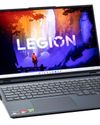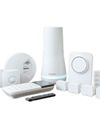Tickling the fancy of tinkerers, the Raspberry Pi is a tiny circuit board with memory, a CPU, and several I/O connectors.

It offers anyone access to the building blocks of computer programming—from making an app to controlling a hobbyist robot—for the price of a good dinner. The newest model, the Raspberry Pi 4, still promises all of this, but it adds the tantalizing possibility of serving as a basic desktop PC with minimal setup effort, in the form of the Raspberry Pi 4 Computer Desktop Kit. At $120, the Desktop Kit, which includes an upgraded version of the Pi 4 board, is much pricier than a Pi board on its own (they start at $35). It delivers good value, though, and gets Pi first-timers up and running quickly. But persistent quirks mean it’s still not a realistic substitute for an actual PC. Prospective buyers who have used Pi before and own the supporting accoutrements will be better off getting the Pi 4 board by itself.
DESIGN
The Raspberry Pi 4 is the same basic size and shape as all of its Model B predecessors, though significantly bigger than the Model A and Zero versions. It’s a 2.2-by-3.4-inch rectangle, and its various components stick up about 0.6-inch tall. Among those components are a Broadcom quad-core processor running at 1.5GHz, four USB Type-A ports, two micro HDMI video outputs, a gigabit Ethernet port, and radios for 802.11ac Wi-Fi and Bluetooth 5.0.
These are recognizable specs to people shopping for a new laptop or desktop to use as their main computer. But other unique aspects to the Raspberry Pi 4 hint at its true identity as a building block for tinkerers and makers.
The first is the General Purpose Input-Output (GPIO) header, a versatile 40-pin connector that can power and communicate with virtually anything you might want to create, from a DIY weather station to a motor for a small robot. All of its uses require a fair amount of tinkering to write code and attach hardware like sensors and lights. Taming the GPIO connector is far outside the consumer-PC use case.
This story is from the {{IssueName}} edition of {{MagazineName}}.
Start your 7-day Magzter GOLD free trial to access thousands of curated premium stories, and 9,000+ magazines and newspapers.
Already a subscriber ? Sign In
This story is from the {{IssueName}} edition of {{MagazineName}}.
Start your 7-day Magzter GOLD free trial to access thousands of curated premium stories, and 9,000+ magazines and newspapers.
Already a subscriber? Sign In

AUDIO
AUDIO

SMART HOME
SMART HOME

T Mobile
Mobile

Lenovo Legion 5 Pro Gen 7 (2022): Nearly an Editors' Choice
A solid gaming laptop for under 2,000

Apple TV 4K 3rd Generation): Best for the Apple-Centric
A powerful, feature-rich media streamer that’s pricier than most

20 Tips for Leveling Up Your Work-at-Home Game
Whether you're new to working remotely or just looking fo do if beffer, fhese fips can help you stay productive and maintain balance.

12 Google Calendar Tricks You're Probably Not Using
Wondering how to share your Google Calendar? Want to add a new calendar? Here are the tips you need.

SimpliSafe Home Security System: Affordable Ease of Use
Affordable security with a focus on flexibility

Honda Unveils First All-Electric SUV, Built on GM's Battery Platform
The Honda Prologue battery-electric SUV arrives in 2024 and will use the Ultium battery technology developed by General Motors.

We Must Save Streaming Video Before It’s Too Late
A generation of art risks extinction if the companies that own streaming services don’t believe their vast libraries are worth preserving. We have to act now to save it.